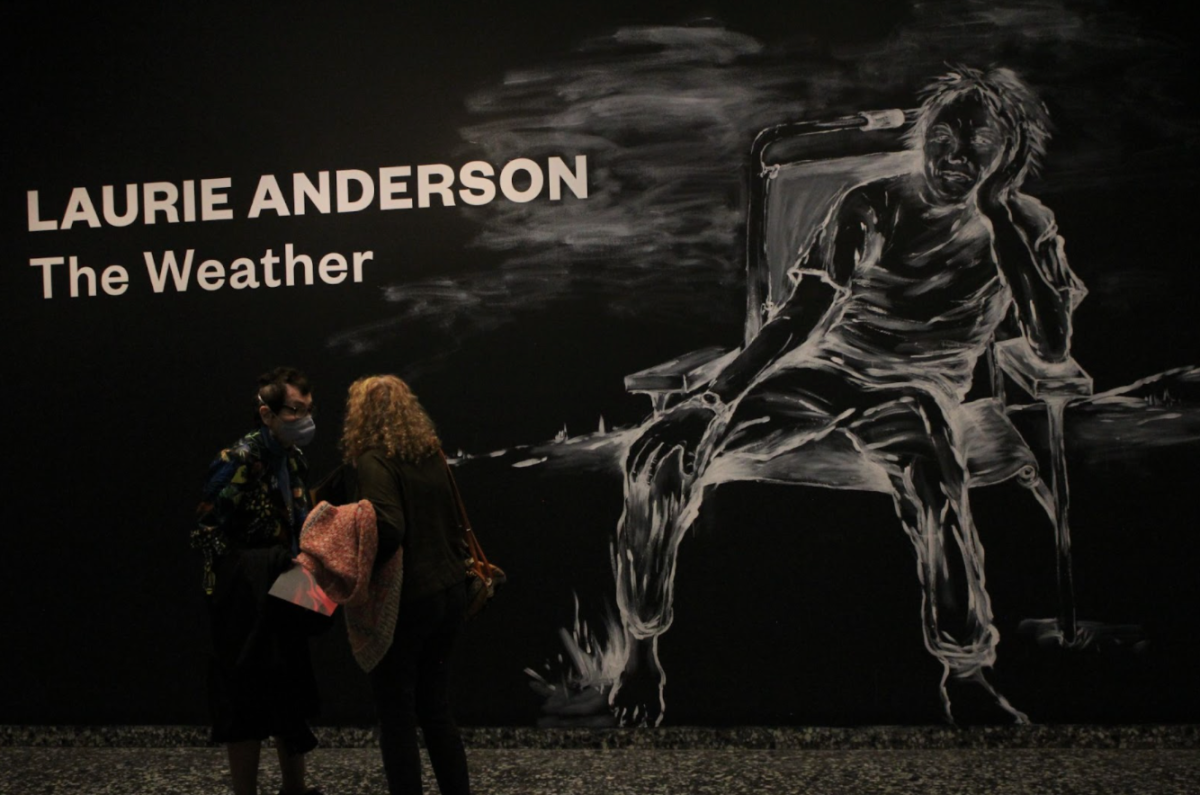It’s hard to know what to think when you enter Laurie Anderson’s most recent installation at the Hirshhorn.
A recent New York Times article tells the story of Anderson’s most recent exhibit. When the Hirshhorn Museum in D.C. first reached out to her to create a retrospective exhibit, she said no. A retrospective exhibit looks back on an artist’s career, showing their development over time. A retrospective exhibit in a big museum would go against everything she believes in: she doesn’t want to look back and stand still but instead wants to keep going forward.
In the end, she agreed to put on an exhibit, but on her terms. She has old work interspersed with new pieces.
“The Weather” will be at the Hirshhorn from Sept. 24, 2021, to July 31, 2022.

It stars “Four Talks,” a room whose walls are covered in text in Anderson’s handwriting and which features three sculptures. The exhibit also stars “Habeas Corpus,” a projected video on a foam sculpture retelling the story of Mohammed el Gharani, one of the youngest detainees at Guantánamo Bay.
The exhibit also features interactive components: viewers can try out the “Handphone Table” where vibrations in the table create music and there will be live performances by Anderson herself from January through July 2022.
Anderson has done just about everything a creative person can do in her staggeringly unique five-decade career.
She is an artist, performer, writer, and Grammy award-winning musician. She’s worked with a variety of mediums, from essays and books to performances to virtual reality.
Anderson has released seven albums for the Warner Brothers, including “O Superman” in 1981, which rose to No. 2 in the British Pop Charts. She’s also currently Harvard University’s Charles Eliot Norton Professor of Poetry.
Anderson is a storyteller of fraught, impossible, nonlinear, elusive, unfinished stories at the heart of it all.
“The Weather” is like nothing I’ve ever seen at the Hirshhorn. There is no clear beginning or end and it’s not straightforward at all but in the most amazing way. It makes the viewer think.
It’s hard to describe something that so forcefully pushes the bounds of creativity and art simply with words.
“Four Talks” was full of people moving around the room, trying to read all the text on the walls. “Habeas Corpus” told a powerful and heartbreaking story in an unexpected way. Words and sounds and images combined seamlessly to tell a story no one could have predicted or imagined.
When I walked out, I was still attempting to grasp the experience, still fully immersed in the exhibit.
Anderson tells stories in a way never seen before and it’s something you shouldn’t miss.
By Isabella Duchovny


































































